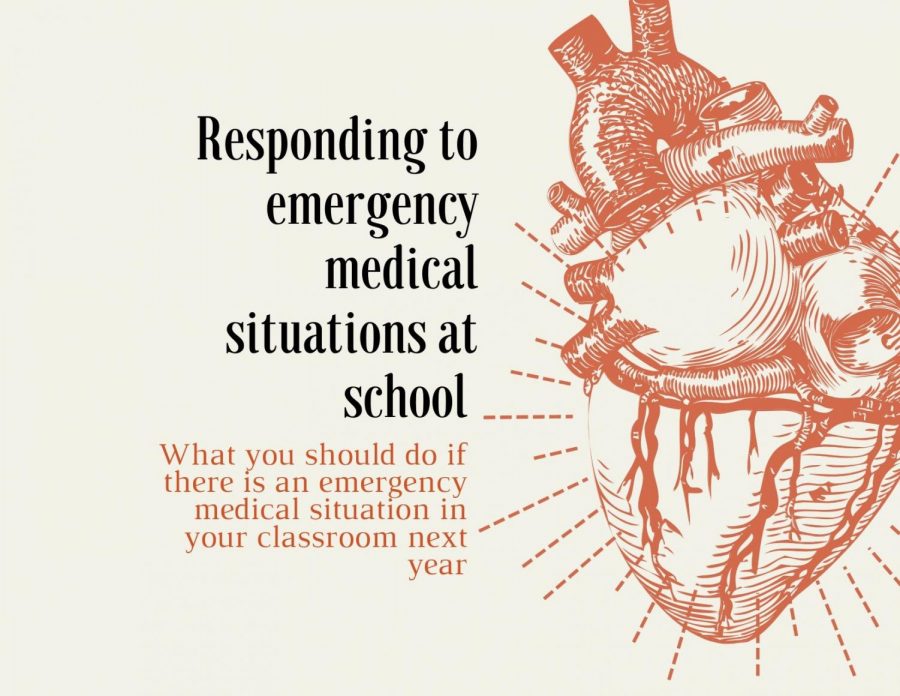Responding to emergency situations at school
What you should do if there is an emergency medical situation in your classroom next year
April 8, 2020
No one expects to have a medical emergency, especially not at school. However, these events are inevitable, so it is important that students and teachers are well-educated and prepared in case a medical emergency does occur at school.
Teachers are trained in what to do in various emergency situations including medical emergencies, but it can often be the cumulative reaction of the class in which the emergency occurs that determines the ultimate safety and security of the student in crisis.
If a medical emergency does happen in your classroom, the school nurse should be the first to be contacted. The teacher should take care of this. If you are in a hallway or the parking lot or some other space where there is not a teacher immediately present, the best scenario is for one person to stay with the student in crisis and another student to run to get the nurse or make contact with a teacher, janitor, or administrator who can call or radio the nurse.
The most common medical emergencies in high schools are fainting and seizures. In either case, do not stand over the student in crisis. Do not take pictures or post about what is happening on social media. Treat the student in crisis as you would want to be treated if it was you.
The teacher may ask you to leave the room to give the student privacy. Please follow whatever directions the teacher gives you.
“The few medical emergencies we’ve had here have been treated appropriately,” said school nurse Jamie Mountain. “The most important thing for students and teachers to remember when they witness a medical emergency is to stay calm, have someone stay with the student, and to contact the clinic as soon as possible. When notifying the clinic, be sure to state the student’s name and the situation. Also, besides the teacher and/or student, the classroom or area should be cleared so there is space for clinic staff, administration, and security to access the situation.”
We have already had a number of medical emergencies this year and students and teachers responded to these situations well.
“Students and staff have time and time again responded appropriately during medical emergencies,” said Principal Leanne Turnbull-Pallette. “Students are usually the first ones to notice when a peer or a classmate may be having a medical emergency. They report incidents and situations immediately. I have been very proud of the response of our building to all medical emergencies.”
Junior Erica Munisar knows what it’s like to need medical attention.
“Throughout elementary and middle school I have had teachers ignore or dismiss my need to go to the nurse when having aura migraines, but at Salem the teachers have done a very good job of listening to me and being understanding,” said Munisar.
Even if a friend’s symptoms don’t seem critical, it can be imperative to catch symptoms early to avoid a trip to the doctor or emergency room later on.
“I appreciate that teachers understand and listen to students when they report that something isn’t right with them as it can be very serious,” said Munisar.
Lastly, what if you’re in class and your teacher has a medical emergency? It does happen.
The first thing to do is send a student to get another teacher or adult. That adult can call the clinic. While that is happening another student should help get everyone out of the room to give the teacher in distress privacy and to make room for the nurse and administrators.
The most important thing to remember is to stay calm. The nurse needs to focus her attention on the person in crisis. If you are causing a distraction, it can prevent that student or teacher from getting the care they need.

